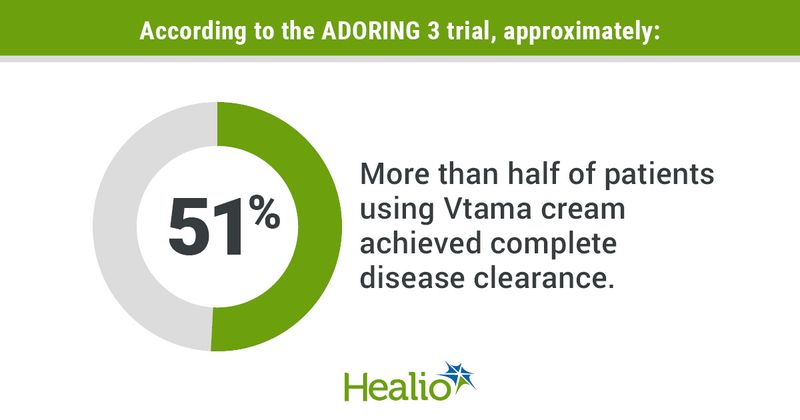Patients with atopic dermatitis maintain improvement post-treatment with Vtama cream
Key takeaways:
- Approximately 81% of Vtama-treated patients achieved EASI 75.
- 51.2% of patients achieved complete disease clearance and maintained an extended period of flare-free days off therapy.
According to analyses of new phase 3 data, patients with atopic dermatitis that were treated with Vtama cream 1% maintained long-term improvement even after stopping treatment, Dermavant announced in a press release.
Vtama (tapinarof) cream 1% is a steroid-free, topical cream that can be used for both acute and long-term management of AD in adults and children aged as young as aged 2 years. While approved for the treatment of plaque psoriasis in adults, Vtama cream is being evaluated in ADORING, an ongoing phase 3 development program, for the treatment of AD.

In ADORING 3, a long-term extension trial of the identical ADORING 1 and 2 trials, 728 patients with AD received treatment with Vtama for up to 48 weeks.

“In the analyses of the ADORING development program, approximately 81% of the patient population in the integrated analysis achieved EASI 75 using Vtama cream, and approximately 51% of patients in ADORING 3, including both adults and children as young as 2 years old, achieved complete disease clearance with a vIGA-AD score of 0,” Philip M. Brown, MD, JD, chief medical officer of Dermavant, said in the release. “Importantly ... no new safety signals were observed, further supporting Vtama cream’s clinical profile and its potential ability to achieve long-term disease control.”
Additionally, the analyses showed that Vtama’s efficacy continued to improve beyond the 8-week double-blind treatment period in the first two ADORING trials, with 73% of patients achieving a vIGA-AD of 0 or 1 with at least a 2-grade improvement from baseline.
A mean itch reduction was observed as early as 24 hours after first application, and 77.9% of patients aged 12 years and older achieved a 4-point or greater reduction in Peak Pruritus Numeric Rating Scale by the end of the study.
During the study, those who achieved complete disease clearance (51.2%) discontinued Vtama and were monitored for disease flares. According to Brown, “those patients were able to maintain an extended period of flare-free days off therapy.”
According to the release, the company will use the data from these analyses for its supplemental new drug application to the FDA that is expected in the first quarter of 2024.
